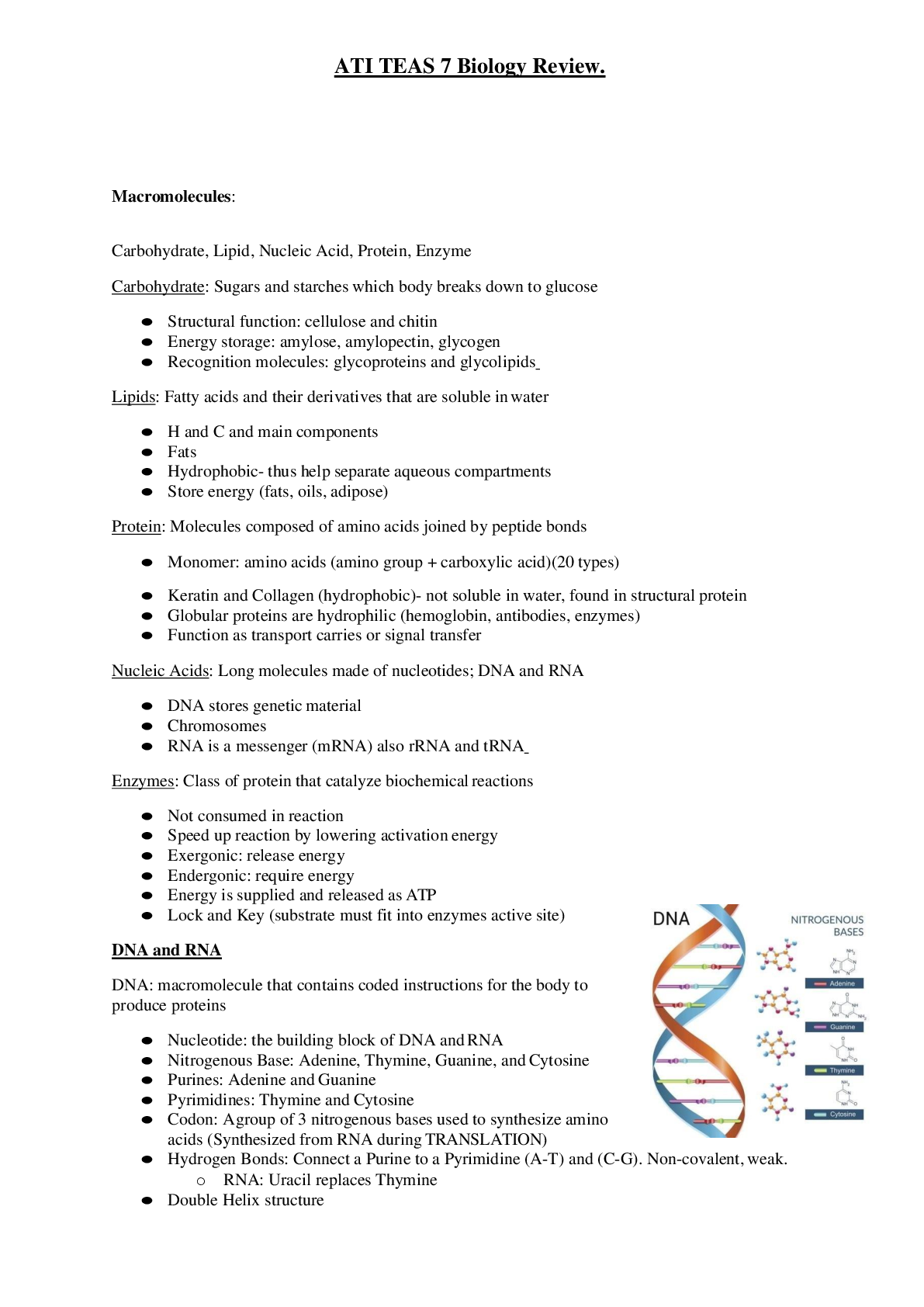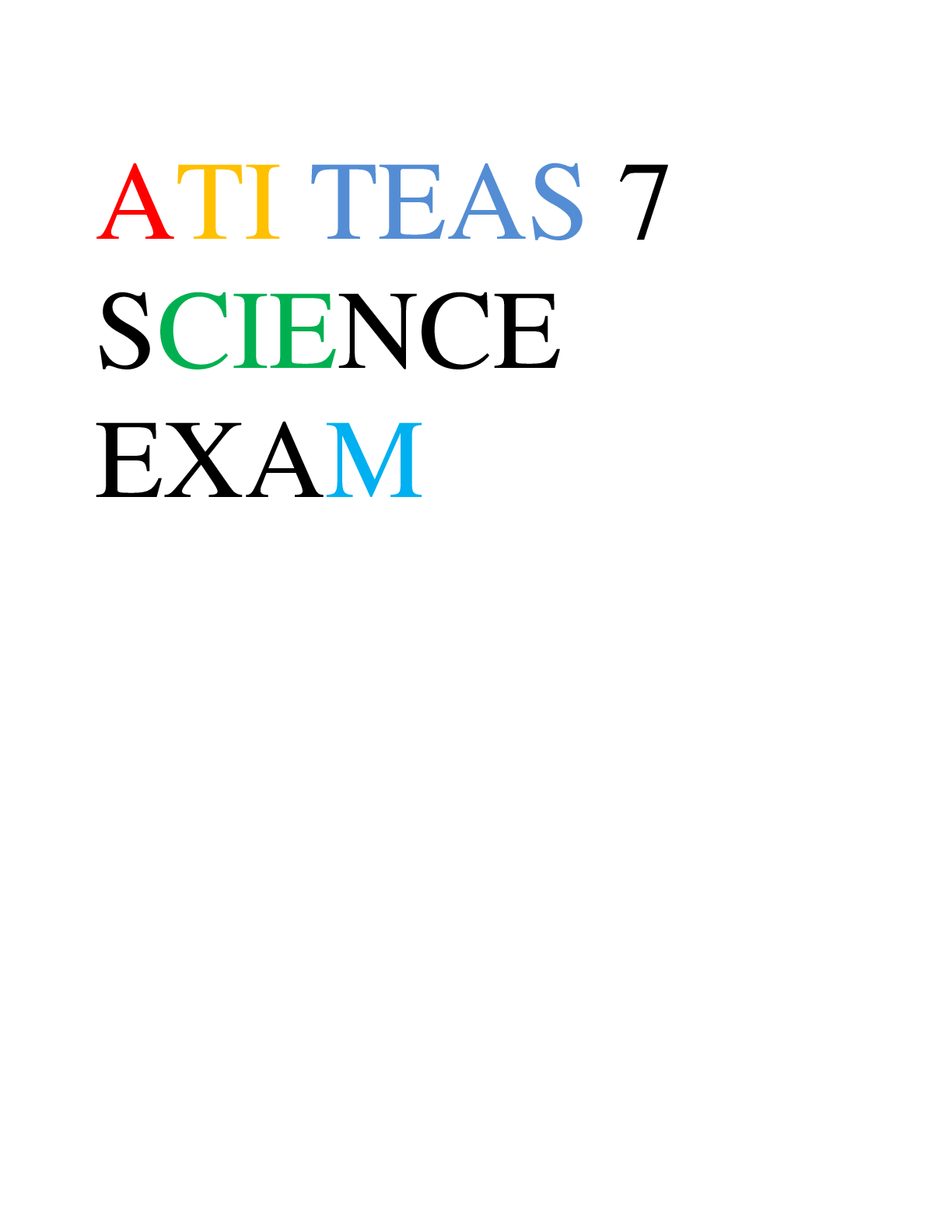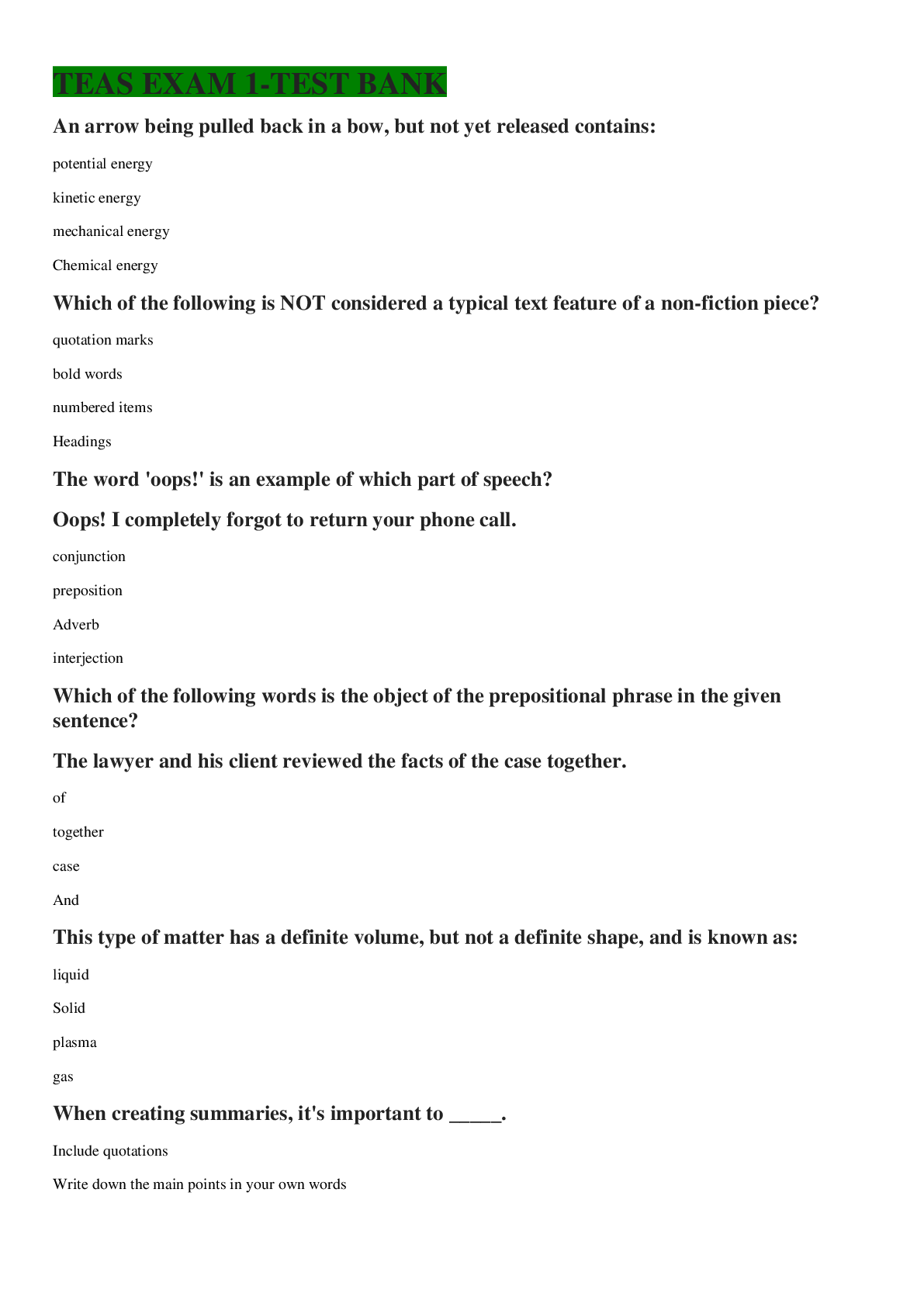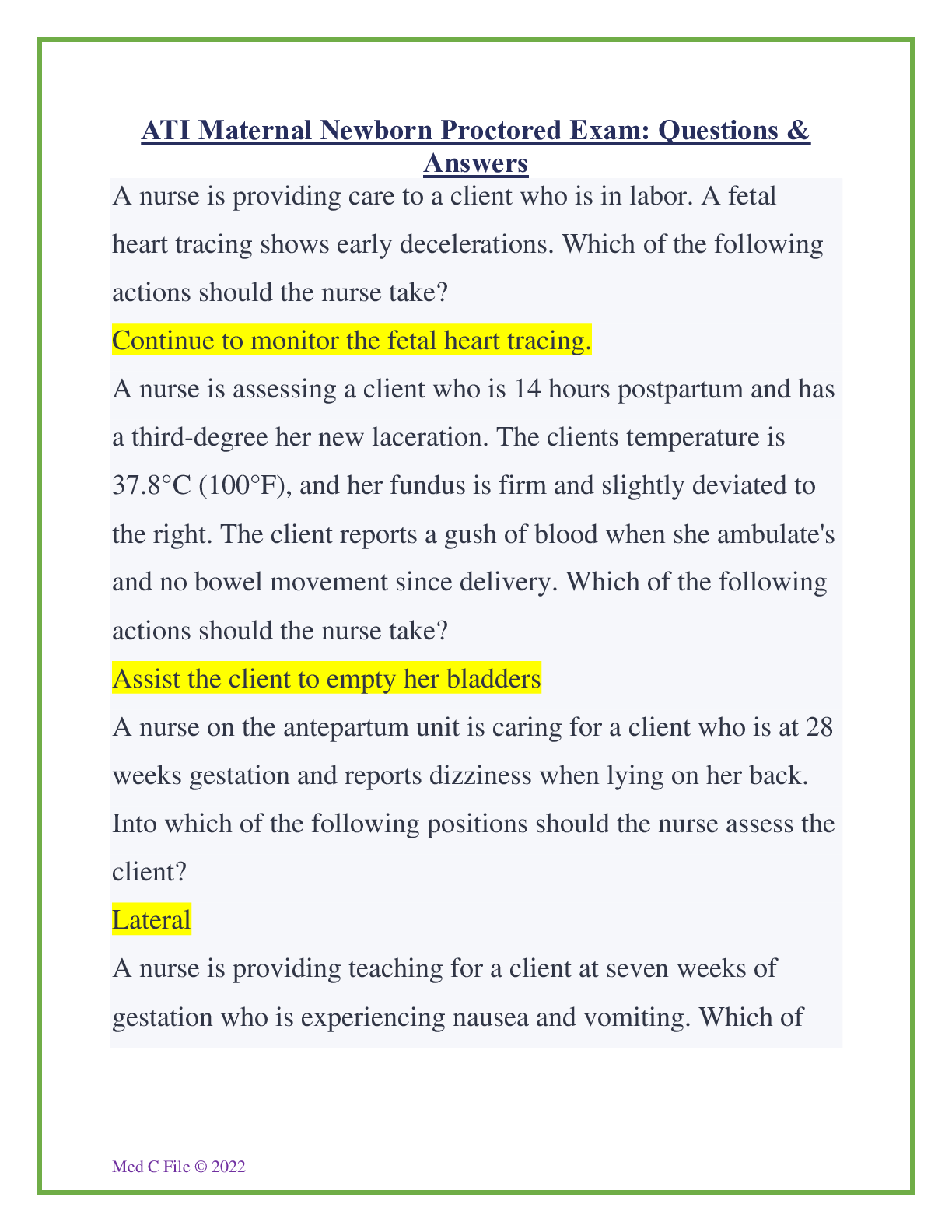ATI TEAS 7 Biology Review 2023 COMPLETE WITH 100% CORRECT ANSWERS UPDATES.
Document Content and Description Below
Carbohydrate, Lipid, Nucleic Acid, Protein, Enzyme Carbohydrate: Sugars and starches which body breaks down to glucose ● Structural function: cellulose and chitin ● Energy storage: amylose, amy... lopectin, glycogen ● Recognition molecules: glycoproteins and glycolipids Lipids: Fatty acids and their derivatives that are soluble inwater ● H and C and main components ● Fats ● Hydrophobic- thus help separate aqueous compartments ● Store energy (fats, oils, adipose) Protein: Molecules composed of amino acids joined by peptide bonds ● Monomer: amino acids (amino group + carboxylic acid)(20 types) ● Keratin and Collagen (hydrophobic)- not soluble in water, found in structural protein ● Globular proteins are hydrophilic (hemoglobin, antibodies, enzymes) ● Function as transport carries or signal transfer Nucleic Acids: Long molecules made of nucleotides; DNA and RNA ● DNA stores genetic material ● Chromosomes ● RNA is a messenger (mRNA) also rRNA and tRNA Enzymes: Class of protein that catalyze biochemicalreactions ● Not consumed in reaction ● Speed up reaction by lowering activation energy ● Exergonic: release energy ● Endergonic: require energy ● Energy is supplied and released as ATP ● Lock and Key (substrate must fit into enzymes active site) [Show More]
Last updated: 2 years ago
Preview 1 out of 51 pages

Buy this document to get the full access instantly
Instant Download Access after purchase
Buy NowInstant download
We Accept:

Reviews( 0 )
$14.00
Can't find what you want? Try our AI powered Search
Document information
Connected school, study & course
About the document
Uploaded On
Feb 09, 2023
Number of pages
51
Written in
Additional information
This document has been written for:
Uploaded
Feb 09, 2023
Downloads
0
Views
96



.png)










.png)







